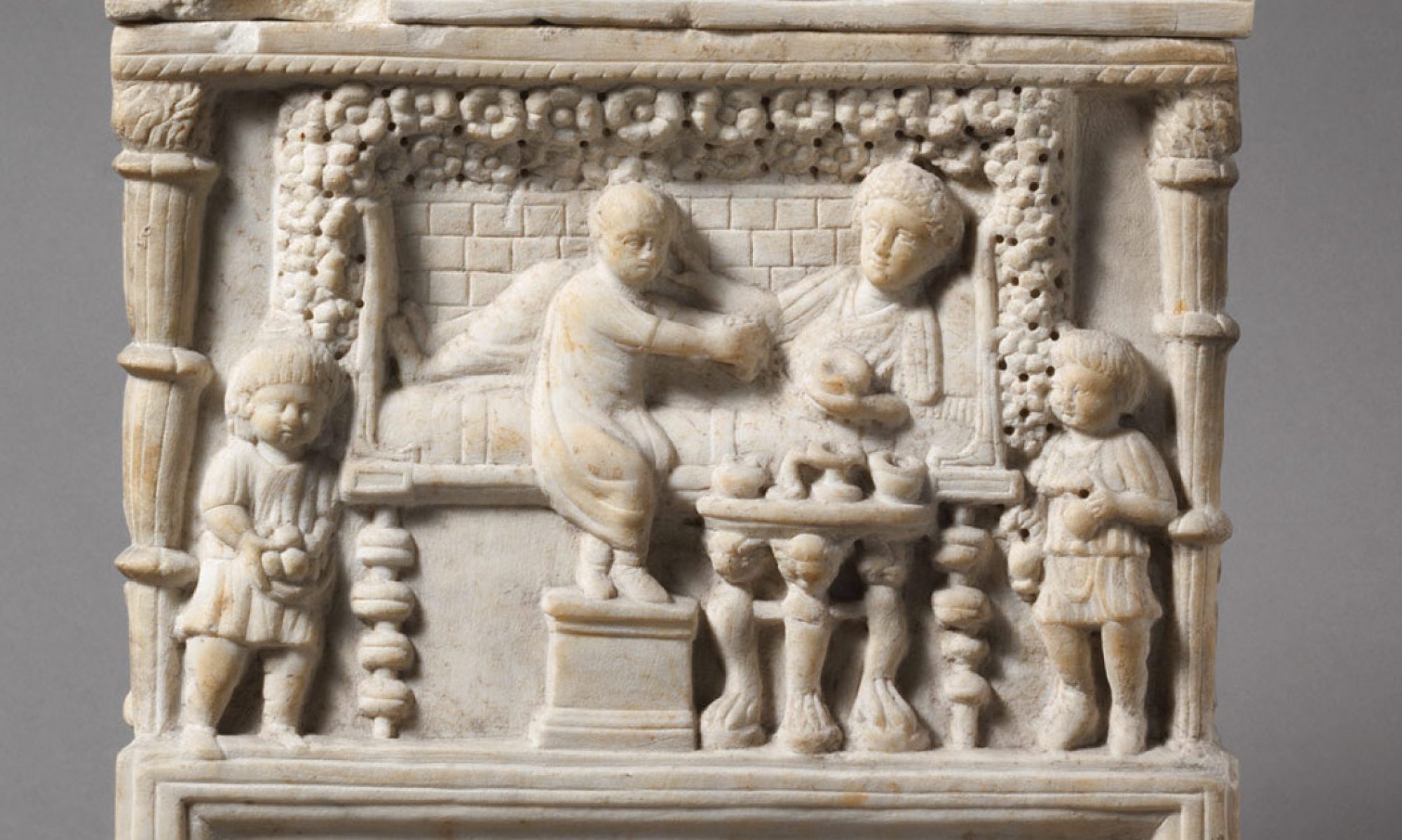The columbarium tomb of Pomponius Hylas, his family, and servants or affiliates serves as another valuable case study for understanding the influence of display contexts on the appearance and decoration of marble cineraria.
A limited number of marble cineraria are associated with the tomb.
Two round vase-shaped urns were situated into the central aedicula and sunken into the base rather than standing on feet as vases.

